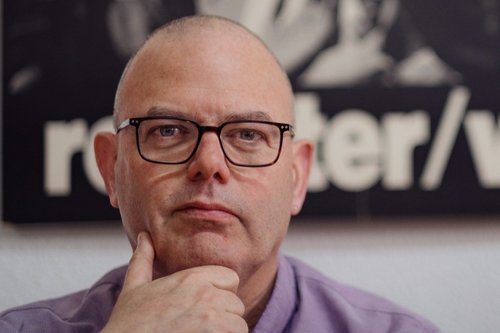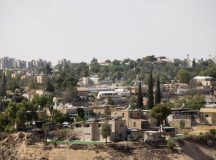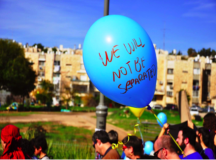In the previous issue of Fathom we carried Sam Shube’s analysis of Israel’s ethno-political divide and a critical response by Lyn Julius. In this issue we carry Sam’s rejoinder and a second critical reply from Lyn.
Lyn Julius discounts the cultural explanation for Israel’s ethno-political divide in favor of law and order, pointing to the 2021 riots as evidence. This is a curious argument, since Mizrachi allegiance to the Likud has been a fixture of Israeli politics for at least 35 years. Furthermore, it begs the question, since Ashkenazim and Mizrachim travel the same roads in the Negev, and fear the same spillover of violence from Bedouin communities. Something else is at work here.
She also offers a more colorful explanation in the ‘subliminal memory of Arab and Muslim persecution … riots, arrests, torture, even executions.’ This, too, is a peculiar theory, even if we grant that one can document subliminal memories. Was the memory of the Farhud in 1941 so much more profound than Auschwitz in 1942, Volhinya in 2019, Kishinev 1903, Kiev 1881 or, well, the whole 2000-year litany of European antisemitism? Arab countries do not hold a candle to European civilisation when it comes to spilling Jewish blood. Yet for some reason, Israel has modeled itself as a bastion of Western culture in the Middle East.
And by the way, this tired explanation of Mizrachi politics has never been an elephant in anyone’s room. As Hillel Cohen points out, establishment figures from Mapai (Labor) first proffered it in the 1950s to distinguish between Mizrachi violence in mixed cities, and violence committed by Ashkenazim, something that never seemed to require an ethnic explanation. As late as 1981, left wing icon Amos Oz famously attributed Mizrachi politics to the authoritarian traditions of Arab countries. Somehow, I doubt my own, Ashkenazi ancestors were busy studying Thomas Jefferson and the Magna Carta while being raped by Cossack hordes in Byelorussia.
In their demonisation of the dark, Arab influence on Mizrachi culture, both the left and right share the same, orientalist biases. I might add that Julius’ description of Arab society, 450 million strong with centuries of history behind it, as ‘shame culture’ is breathtaking in its reductionism. Arabs across the Middle East view Egyptian cinema with far less recourse to subtitles than, say, Swedes or Brits who enjoy Pedro Almodovar, but the latter hardly vitiates the concept of European culture. Whether Arab culture exists or not, however, Jews have always been part of it. 20th century Jewish musicians like Saleh and Dawood al Kuwaity and Yusuf Zaarur drew large audiences in Iraq, as did Albert Mugrabi, Munir and Leila Murad in Egypt, Zohra El Fassia in Morocco and Habiba Msika in Tunisia. This vital cultural milieu finally gave way to mass emigration, often triggered by persecution. But a quarter of a million Jews from Morocco, the largest Mizrachi constituency in Israel, did not make Aliyah while fleeing for their lives. They came consciously and deliberately, over the course of two decades, out of love for Zion and Jerusalem – the same reasons that brought me here. The lachrymose conception of 20th century North African Jewish history denies Mizrachi Jews agency, and conspires with the classic Ashkenazi suppression of Mizrachi Jews’ role in the Zionist ethos.
Finally, I would take issue with Julius’ monochrome, security explanation of why Netanyahu is a Mizrachi icon. My own kibbutz, for instance, is located on the Gaza border fence, across the road from the town of Sderot. Both places share the dubious distinction of being the primary target in Israel for Hamas rocketeers. People in both communities share the same security concerns, serve in the same army, and wake up to the same landscape, yet their voting patterns remain diametrically opposed. I would argue that Mizrachi loyalty to Bibi has as much to do with identity as it does with policy. Netanyahu has reversed his positions on everything from a Palestinian state and the Gaza disengagement to child support and the integrity of the judicial system, but his support among Mizrachim remains constant. Right wing publicist Avishai Ben Chaim correctly puts him in league with Menahem Begin and Rabbi Ovadia Yosef as an object of Mizrachi veneration, much like Yitzhak Rabin was for me. If security were the main issue, Benny Gantz’ testosterone-pumped Blue White party, established or led by four retired IDF Chiefs of Staff with the rank of Lieutenant General – two of them Mizrachim – would have trounced Captain Netanyahu at the polls. Bibi, for Second Israel, is above all a symbol of their resistance to Ashkenazi hegemony. And as much as I object to the man and everything he stands for, I always try to understand, and respect their choices. It is something the Zionist left has yet to do.




































